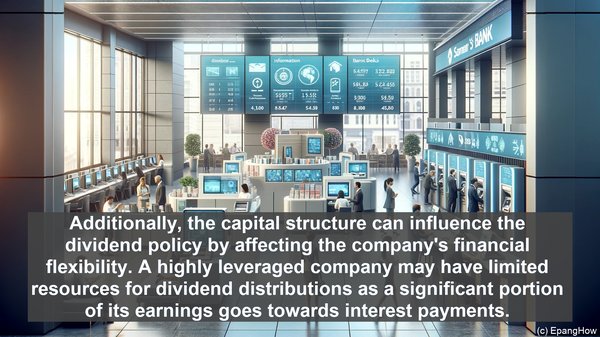Introduction: The Significance of Financial Policies
Hello everyone, and welcome to today’s article. When it comes to managing a company’s finances, there are numerous strategies at play. Two such strategies, dividend policy and capital structure policy, often come into focus. While both are integral to a firm’s financial framework, they serve distinct purposes. Today, we’ll explore the differences between these two policies and how they shape a company’s financial landscape.
Defining Dividend Policy: Sharing Profits with Shareholders
Dividend policy refers to the framework a company uses to determine the distribution of profits to its shareholders. When a company generates profits, it has two options: reinvest the earnings into the business or distribute them to shareholders. Dividends are the portion of profits that are distributed. The dividend policy outlines the criteria for determining the amount and timing of these distributions. It is a crucial decision for companies, as it directly impacts shareholder wealth and can influence investor sentiment.
Factors Influencing Dividend Policy
Several factors come into play when formulating a dividend policy. One of the primary considerations is the company’s profitability and cash flow. A company with consistent earnings and robust cash reserves is more likely to have a stable dividend policy. Additionally, the industry in which the company operates can also influence the dividend policy. For example, mature and stable industries often have higher dividend payout ratios compared to growth-oriented sectors. Finally, the company’s growth prospects and investment opportunities also play a role. If a company has significant growth prospects, it may choose to retain more earnings for reinvestment rather than distributing them as dividends.
Understanding Capital Structure Policy: Balancing Debt and Equity
While dividend policy focuses on the distribution of profits, capital structure policy deals with the composition of a company’s financing. Capital structure refers to the mix of debt and equity a company uses to finance its operations. A company can raise funds through issuing stocks (equity) or taking on debt (bonds, loans, etc.). The capital structure policy determines the optimal mix of these financing options. It is a critical decision, as it affects a company’s risk profile, cost of capital, and financial flexibility.

Factors Influencing Capital Structure Policy
Similar to dividend policy, several factors influence a company’s capital structure policy. One of the primary considerations is the company’s risk appetite. Equity financing, while not requiring regular interest payments, dilutes ownership and can lead to loss of control. On the other hand, debt financing comes with fixed interest obligations and the risk of default. The company’s industry dynamics also play a role. For example, capital-intensive industries may rely more on debt financing due to the availability of collateral. Additionally, market conditions, particularly interest rates, can impact the cost and availability of debt financing. Finally, the company’s growth stage and profitability also influence the capital structure. Startups, for instance, may rely more on equity financing, while established firms with stable cash flows may prefer debt financing.
Interplay Between Dividend Policy and Capital Structure Policy
While dividend policy and capital structure policy are distinct, they are not entirely independent. The dividend policy can impact the capital structure and vice versa. For example, a company with a high dividend payout ratio may need to rely more on equity financing to meet its capital requirements. Conversely, a company with a conservative dividend policy may accumulate more cash, reducing the need for external financing. Additionally, the capital structure can influence the dividend policy by affecting the company’s financial flexibility. A highly leveraged company may have limited resources for dividend distributions as a significant portion of its earnings goes towards interest payments.

